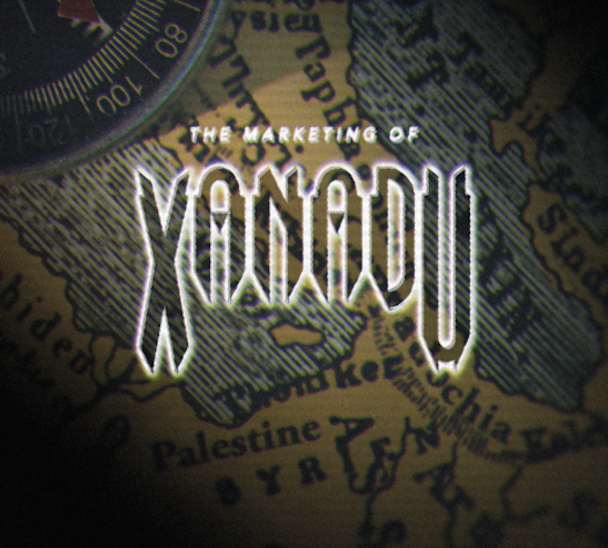More than just the destination: the marketing of Xanadu
We’ve all seen the movie: a hero travels to an exotic destination in search of something or someone precious, but it’s not the physical journey that matters more so the emotional one. The real destination is not Xanadu or Shangri-La or El Dorado, but an encounter with themselves – a truer version of themselves they have yet to discover.

Marketing of Xanadu
The axiom that journeys are about traversing inner landscapes as much as exterior ones kept presenting itself to me during the recent roundtable hosted by The Drum exploring trends in travel marketing. Much of the conversation was about technology and data – how booking engines, rating sites, social media, digital content, AI, and so on have changed the way we travel, and will again.
This is indisputable. Technology has changed the way we research, and book holidays and business trips beyond recognition. Travellers are more informed about suppliers and destinations than ever before, and conversely travel brands are more informed about these travellers too. Much of the conversation was how this data could be joined up and used to make more seamless, personalised experiences.
How technology helps with the logistics of travel is both obvious and welcome. What’s less considered, perhaps, is what it’s doing to our emotional experience of travel. In short, getting to Xanadu is easier than ever, but it’s also making it less special once we get there.
Consider VR. It’s touted as the next big thing in travel marketing, immersing us in the destination before we get there. But doesn’t it also spoil the surprise? Why bother going to Dubai if you’ve experienced the VR sky-diving fly-through version, like I have? Or the fact that 73% of people got their travel inspiration from social media last year. Will reality match up to the ‘#nofilter’ azure of the magical beach scene you’ve seen on Instagram? Does it make it feel less authentic to sink your toes into the warm sand when you know that @TravelPrincess has shared the same experience with her 367K followers? Obviously, these images omit the smells, textures, and tastes of a destination, but then again, so will most of the marketing.
So, what to do?
It’s seems to me that the more insightful travel marketers have cottoned on to how technology is changing our emotional journeys and are wrestling with questions of authenticity and familiarity that technology can raise or even damage.
A number of brands have grappled successfully with the dilemma of authenticity by creating a human connection.
When Airbnb’s latest ad exhorts ‘don’t go to Paris. Don’t tour Paris. And please don’t ‘do’ Paris,” but asks us to ‘live in Paris’ instead, it’s understands that in many respects we’ve already seen picture postcard Paris before we’ve even got there. Connecting guests with locals to deliver a more authentic experience is a trick also pulled off by Icelandair’s ‘stop-over buddy’ and The Swedish Number, where volunteers will gladly take calls and answer questions from curious foreigners.
Another strategy is to defamiliarise the tourism bureaux images we’ve seen so often before by finding a new and unexpected point of view on scenes we know too well. Norway has made us look again at its fjords and waterfalls by giving us the eye view of some of the million or so sheep let loose to roam the landscape every summer. Visit Mexico has gotten workaholic travel-shy Americans to consider what they are missing out on by sending their doppelganger to go travelling for them. In both cases, the familiar scenes suddenly take on new meaning.
The most extreme version of this are destination brands that market themselves as the settings for fictional places. Are travellers’ minds visiting Middle Earth or New Zealand, Westeros or Northern Ireland? It’s literally the marketing of Xanadu – a place you can’t actually visit because it exists only in our imagination.
It’s all a departure (sorry!) from the classical destination marketing, images of beaches and mountains and fauna, that increasingly don’t work in a world where we are inundated with similar images provided by social influencers, your friends on holiday, and travel-related content. We already know that India is ‘sensational’, Costa Rica is ‘essential’, and Taiwan is at the ‘heart of Asia’ (where else would it be…). Again, they’re marketing the destination, rather than the emotional transformation that might occur there. Contrast this with Colombia’s contention that “the only risk is that you might want to stay”, a campaign that has now ended but which featured travellers so enchanted by the place that they never left.
And this pretty much sums up why we travel. We are not simply going places. We are going on an emotional journey that might change how we look at life when we get home. Technology can help us get there and even changes our experience of a destination once we are there, but it doesn’t mean marketers can dispense with the storytelling and human connections that create the emotional landscapes that draw us to a destination as much as the vistas.
And now I really want to go on holiday. Someone direct me to Platform 9 ¾ please…
Ed Woodcock is director of narrative at Aesop.
Content by The Drum Network member:

Aesop
Aesop - A creative agency powered by narrative thinking
A lot of agencies talk about storytelling. And, at face value, it’s what all advertising agencies...

